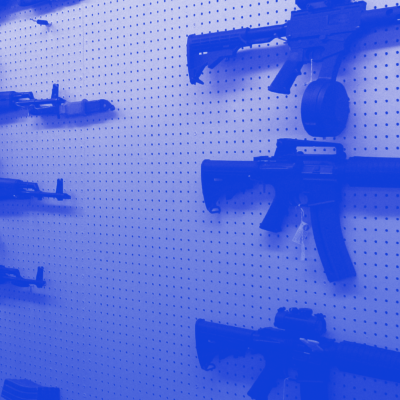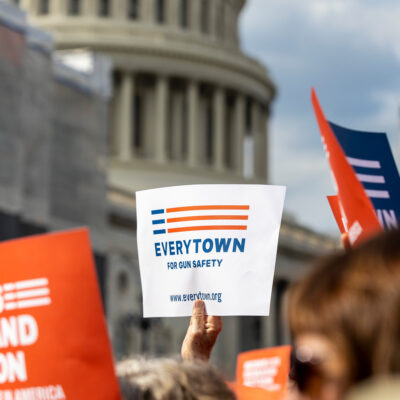New Analysis of ATF Crime Gun Data in Washington State Shows Thousands of Guns Move from Lawful Purchasers to Crime Scenes Each Year, with Speed of That Movement Increasing
8.27.2014
Today Everytown for Gun Safety released a new analysis of crime gun trace data from the Bureau of Alcohol, Tobacco, Firearms and Explosives (ATF), which shows that thousands of guns in Washington State move from lawful purchasers to crime scenes each year, and the speed of that movement is increasing. Initiative 594, Washington State’s background check initiative, would help interrupt the flow of crime guns and help keep guns out of the hands of prohibited purchasers.
Everytown’s analysis, available here, shows that Washington law enforcement recovered and traced nearly 20,000 guns between 2006 and 2013, and that over that period, the share of likely-trafficked guns increased by nearly 50 percent. Previous research by Mayors Against Illegal Guns shows that crime gun exports and the share of crime guns that are likely trafficked are both higher in states that lack key public safety laws. States that do not require background checks for all gun sales export crime guns to other states at more than three times the rate. And in those states, a higher than average share of firearms are recovered within two years of original purchase.[1]
Increase of Short ‘Time to Crime’ Guns
ATF considers a gun at higher risk of having been trafficked if it has a short “time-to-crime,” meaning it was recovered by law enforcement at a crime scene less than two years after its original sale by a licensed dealer.[2] In 2013, nearly 1 in 3 guns recovered from Washington crime scenes (29 percent) had a short time-to-crime, up from 20 percent of guns recovered in 2006.
Details of Washington Crime Gun Analysis
Everytown’s analysis of ATF data shows that between 2006-13, Washington law enforcement recovered and traced 19,329 guns. Of those, 30 percent (5,738) were first sold by gun dealers outside the state, and 70 percent (13,591) originated inside Washington.
Washington is also a major source of crime guns recovered in other states. In 2012 and 2013, 1,752 guns originally purchased in Washington were recovered at crime scenes in other states. Adjusting for population, the top out-of-state destinations of firearms purchased in Washington were Oregon (4.1 guns per 100,000 residents), Idaho (2.8), Alaska (1.2), Montana (1.4), and Nevada (1.7).
Initiative 594: Closing the Background Check Loophole in Washington State
The data released today shows that guns legally purchased in Washington are fueling gun crime and violence in the state and across the region, and that the speed at which criminals obtain those guns is increasing. One of the most effective ways to stem the flow of guns to dangerous hands is to close criminals’ easy access to guns through unlicensed sales without background checks. An analysis of gun trafficking in 53 U.S. cities conducted by Johns Hopkins researchers found that intrastate gun trafficking was 48 percent lower where private handgun sales are subject to a background check.[3]
In November, Washington State voters will have a chance to reduce criminal access to guns by voting Yes on Initiative 594. Initiative 594 would apply the currently used criminal and public safety background checks by licensed dealers to all firearm sales and transfers, including gun show and online sales, with specific exceptions. Under Initiative 594, everyone in Washington would be required to pass the same background check, regardless of where they buy it and from whom they buy it.
About Trace Data
When a gun is found at a crime scene, law enforcement can use the serial number to trace it back to its manufacturer, and then to the dealer who first sold it. Because dealers keep records of sales to buyers who pass background checks, law enforcement can identify the first buyer. This provides a critical lead for tracking down violent criminals. Twenty-nine percent of ATF gun trafficking investigations are initiated through analysis of firearms trace data, multiple sales records, or both, and tracing is used as an investigative tool in 60 percent of investigations.[4]
Historically, the gun lobby has fiercely objected to the analysis of crime gun trace data, and beginning in 2003 Congress enacted a series of restrictions, known as the Tiahrt Amendments, which severely limit access to these materials, even for many law enforcement purposes.[5] In 2007, Mayors Against Illegal Guns successfully mobilized opposition to the Tiahrt Amendments and legislators ultimately relaxed the language to allow ATF to publicly release limited statistical reports using aggregate gun trace data. Everytown relied on this aggregate trace data for the present analysis.[6]
Paid for by Everytown for Gun Safety Action Fund for I-594; PO Box 21214, Seattle, WA 98111.
Top contributors: Everytown for Gun Safety Action Fund.






